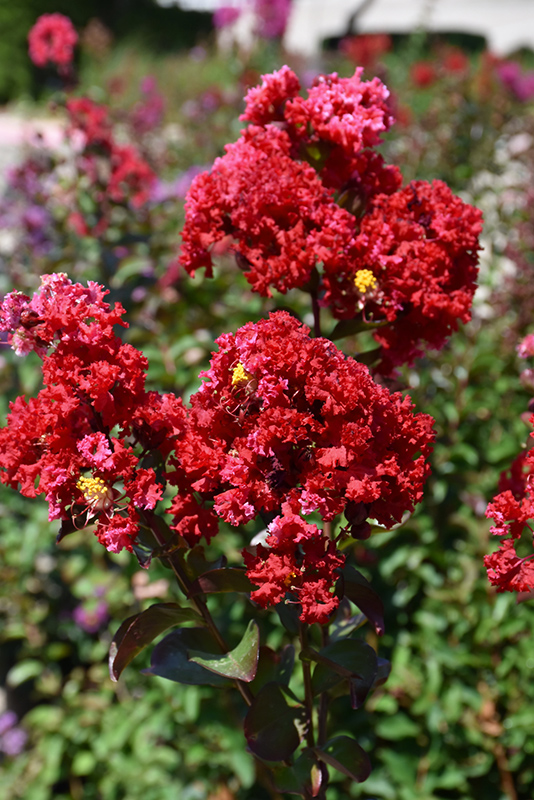Plant Finder
Colorama™ Scarlet Crapemyrtle
Lagerstroemia 'JM1'
Height: 20 feet
Spread: 12 feet
Sunlight:
![]()
![]()
Hardiness Zone: 6b
Other Names: Crape Myrtle, Crepe Myrtle
Brand: Garden Debut
Description:
This attractive ornamental shrub or small tree is covered in abundant scarlet red blooms in summer, followed by vibrant orange and red fall foliage; a captivating focal point for the garden or border
Ornamental Features
Colorama™ Scarlet Crapemyrtle is clothed in stunning panicles of scarlet frilly flowers at the ends of the branches from early summer to early fall. It has dark green deciduous foliage which emerges burgundy in spring. The oval leaves turn outstanding shades of red and orange in the fall.
Landscape Attributes
Colorama™ Scarlet Crapemyrtle is a dense multi-stemmed deciduous tree with an upright spreading habit of growth. Its relatively fine texture sets it apart from other landscape plants with less refined foliage.
This is a relatively low maintenance tree, and is best pruned in late winter once the threat of extreme cold has passed. It has no significant negative characteristics.
Colorama™ Scarlet Crapemyrtle is recommended for the following landscape applications;
- Accent
- Mass Planting
- Hedges/Screening
- General Garden Use
Planting & Growing
Colorama™ Scarlet Crapemyrtle will grow to be about 20 feet tall at maturity, with a spread of 12 feet. It has a low canopy with a typical clearance of 3 feet from the ground, and is suitable for planting under power lines. It grows at a fast rate, and under ideal conditions can be expected to live for 50 years or more.
This tree does best in full sun to partial shade. It prefers to grow in average to moist conditions, and shouldn't be allowed to dry out. It is very fussy about its soil conditions and must have rich, acidic soils to ensure success, and is subject to chlorosis (yellowing) of the foliage in alkaline soils. It is highly tolerant of urban pollution and will even thrive in inner city environments. This particular variety is an interspecific hybrid.



